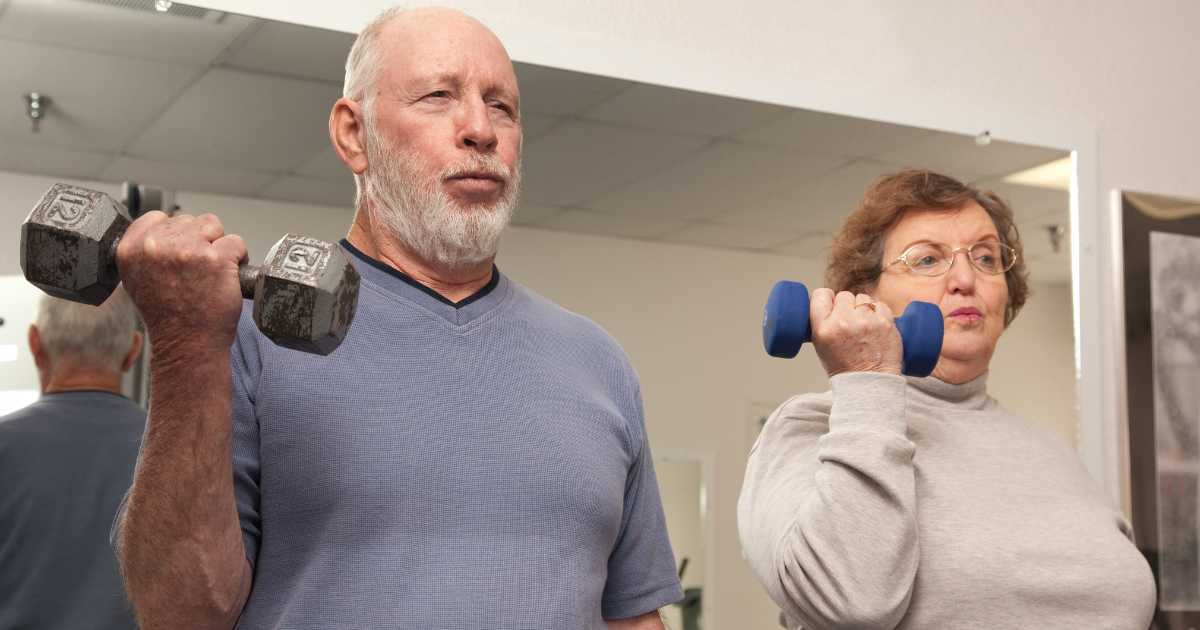In today’s fast-paced world, finding time for lengthy gym sessions can be challenging. However, by focusing on compound exercises—movements that engage multiple joints and muscle groups—you can achieve significant fitness gains in less time. These exercises not only enhance strength and muscle tone but also improve functional fitness, making daily activities easier and reducing the risk of injury.
Top Multi-Joint Exercises for Full-Body Strength
1. Barbell Squat

The barbell squat remains a cornerstone of strength training. It primarily targets the quadriceps, hamstrings, glutes, and calves, while also engaging the core and lower back for stability. Proper form is crucial: keep your chest up, back straight, and knees aligned over your toes.
2. Dumbbell Lunges
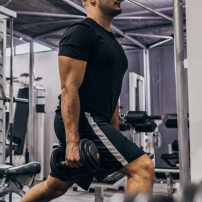
Dumbbell lunges are excellent for developing lower body strength and balance. They work the quadriceps, hamstrings, glutes, and calves, and also engage the core muscles to maintain stability. Ensure your front knee stays above your ankle and avoid letting it extend past your toes.
3. Barbell Bench Press

A staple in upper body workouts, the barbell bench press targets the pectoral muscles, triceps, and anterior deltoids. Maintain a controlled movement, lowering the bar to your chest and pressing upward without locking your elbows.
4. One-Arm Dumbbell Row
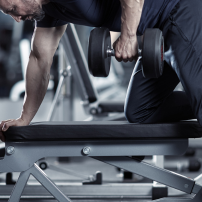
This exercise focuses on the latissimus dorsi, trapezius, rhomboids, and biceps. By performing rows unilaterally, you can address muscle imbalances and enhance core stability. Keep your back flat and pull the dumbbell towards your hip.
5. Wide-Grip Lat Pulldowns

Wide-grip lat pulldowns effectively target the upper back, particularly the latissimus dorsi. They also engage the biceps and forearms. Focus on pulling the bar down to your upper chest while keeping your torso stationary.
6. Dumbbell Shoulder Press
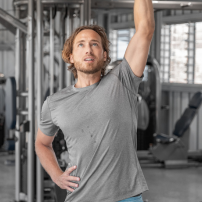
The dumbbell shoulder press strengthens the deltoids, trapezius, and triceps. Performing this exercise seated or standing can also engage the core muscles. Press the dumbbells overhead without arching your back.
7. Abdominal Bicycle Crunches
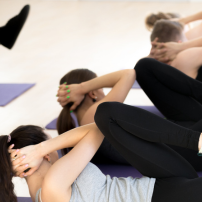
Bicycle crunches are a dynamic abdominal exercise that targets the rectus abdominis and obliques. They also engage the hip flexors. Ensure a controlled motion, bringing opposite elbow to knee while keeping your lower back pressed to the floor.
Incorporating Progressive Overload
To continue making progress, it’s essential to apply the principle of progressive overload—gradually increasing the weight, frequency, or intensity of your workouts. This approach stimulates muscle adaptation and growth, leading to improved strength and endurance. Remember to adjust your training variables systematically to avoid plateaus and reduce the risk of injury.
Embracing Eccentric Training
Recent studies highlight the benefits of eccentric training—focusing on the lengthening phase of muscle contractions. Incorporating exercises like slow-descending squats or controlled lowering during push-ups can enhance muscle strength andflexibility. Eccentric movements are particularly effective in building muscle and preventing injuries.
Safety and Proper Form
Prioritizing proper form is crucial to prevent injuries and maximize the effectiveness of your workouts. Consider consulting with a certified fitness professional to learn correct techniques, especially when introducing new exercises or increasing intensity. Using mirrors, recording your form, or working with a trainer can provide valuable feedback.
Frequently Asked Questions
Q1: How many times a week should I perform these exercises?
A1: Aim for 2-3 sessions per week, allowing at least one rest day between workouts to facilitate muscle recovery.
Q2: Can beginners perform these compound exercises?
A2: Yes, beginners can start with bodyweight versions or lighter weights, focusing on mastering proper form before progressing to heavier loads.
Q3: How do compound exercises benefit weight loss?
A3: Compound exercises burn more calories by engaging multiple muscle groups simultaneously, boosting metabolism and promoting fat loss.
Q4: Should I warm up before performing these exercises?
A4: Absolutely. A proper warm-up increases blood flow to muscles, enhances flexibility, and reduces the risk of injury.
Q5: Can I combine these exercises into a single workout routine?
A5: Yes, creating a full-body workout incorporating these compound movements can be highly effective for overall strength and conditioning.
Q6: How long should I rest between sets?
A6: Rest periods can vary based on goals—typically 30-60 seconds for endurance, 60-90 seconds for hypertrophy, and 2-3 minutes for strength gains.
Maximize Your Workout Efficiency with Compound Exercises
Integrating multi-joint compound exercises into your fitness regimen is a time-efficient strategy to enhance strength, improve body composition, and support overall health. By focusing on proper form, progressive overload, and incorporating recent training methodologies like eccentricmovements, you can achieve significant results. Remember to listen to your body, prioritize recovery, and consult fitness professionals as needed to ensure a safe and effective workout journey.
Written by: Danielle Gymorie, Cert. PT, Prescription Fitness
Updated: April 2025

Click on a Subject to Learn More



